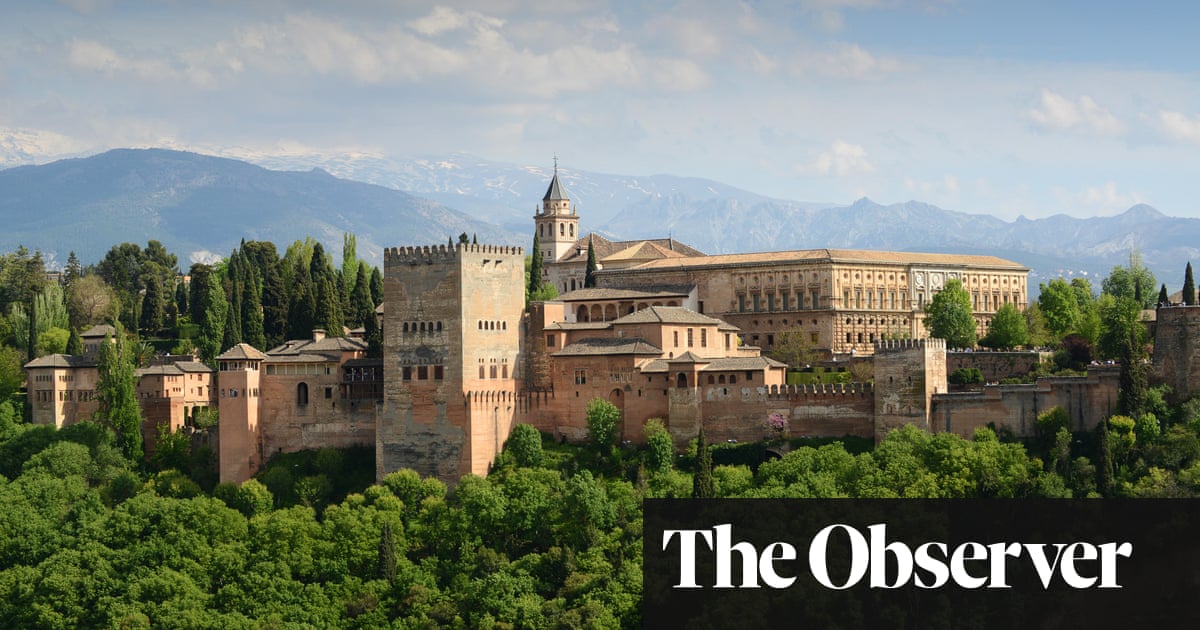Almost 200 years ago, the pioneering British travel writer Richard Ford offered an observation that has been happily ignored by the legions of authors who have traipsed in his dusty footsteps across Spain, toting notebooks, the odd violin or Bible, and, of course, their own particular prejudices.
“Nothing causes more pain to Spaniards”, Ford noted in his 1845 Handbook for Travellers in Spain, “than to see volume after volume written by foreigners about their country.”
Given some of his waspish pronouncements, the pain in Spain was thoroughly justified. Catalonia, to Ford’s mind, was “no place for the man of pleasure, taste or literature … here cotton is spun, vice and discontent bred, revolution concocted”. He found Valencians “vindictive, sullen, fickle and treacherous”, while reporting that the “better classes” in Murcia “vegetate in a monotonous unsocial existence: their pursuits are the cigar and the siesta”.
Ford, whose often acid nib belied a deep love of all things Iberian, is one of 20 British authors profiled in a new Spanish book, Los curiosos impertinentes (“the annoyingly curious”), that explores the UK’s enduring fascination with Spain and reflects on how two centuries of travel writing have shaped the country’s image abroad.
The book is prefaced by Ford’s pain quotation and by another, from the late Spanish writer Ramón J Sender: “There’s nothing like a foreigner when it comes to seeing what we’re like.”
The writers selected by the book’s author, the British journalist and writer William Chislett, include Ford and his contemporary, the Bible salesman George Borrow, as well as some of their 20th-century successors, among them Laurie Lee, Gerald Brenan, Norman Lewis, VS Pritchett and Robert Graves. Authors from more recent decades are represented by Miranda France and Giles Tremlett, and by the late Michael Jacobs, to whom the book is dedicated.
“I deliberately began in the 19th century with Ford and Borrow and didn’t go further back because I felt I had to start somewhere,” says Chislett, who has lived in Spain for almost 40 years. “One could regard Ford’s book as the first travel book … Then we skip forward to the 20th and 21st century for 18 other people, most of whom are absolutely unknown here, let alone in the UK.”
The book, which was originally conceived of as an exhibition, is published by the Instituto Cervantes, the governmental organisation tasked with promoting the Spanish language and Hispanic culture.
Chislett says there is no escaping the fact that all the books he cites “have forged an image” of the country that has shifted over the centuries.
He points out that the old British idea of Spain as a dark, devout place – built on anti-Spanish propaganda and best summed up by the austere majesty of El Escorial, Philip II’s monastery-cum-palace near Madrid – began to give way to something altogether more wild and romantic in the 19th century. In the aftermath of the peninsula war, Britons began to be seduced by Spain’s history, architecture and culture, and El Escorial had given way to the distant, Islamic splendours of the Alhambra in Granada.
“It was unknown territory and had all these exotic elements,” adds Chislett. “Word got around that there were all these abandoned castles and flamenco … You’ve got these two contrasts: you’ve got the ‘black legend’ version of Spain and then you’ve got the romantic version of Spain.”
Borrow and Ford were followed by Lee, who immortalised Spain on the cusp of civil war in As I Walked Out One Midsummer Morning and by Lewis, whose Voices of the Old Sea captures a dying way of life in Farol, a profoundly superstitious village on the Costa Brava, as fishing gives way to mass tourism.
The authors’ reflections also reveal that concerns over what is known today as overtourism are hardly new. Ford, who perhaps did more than most to put Spain on the tourist map, complained that the “implacable march of the European intellectual is crushing many native wildflowers”, while Pritchett later lamented that Spain had been “invaded by tourists”.
Equally familiar, as Chislett and others mention, is Spain’s love-hate relationship with how it is viewed through foreign eyes. “Maybe Spaniards are prickly because so much has been written about them,” he says. “I haven’t come to any conclusion, but maybe you could say Spaniards – unjustifiably now, but maybe justifiably during the Franco regime – have an inferiority complex, which I like to think they’ve got rid of totally, given what’s happened over the last 50 years.
“In many ways, Spain is way ahead of other European countries.”
While Chislett describes the book as a “labour of love” and an attempt to repay Spain for its kindness and hospitality over the past four decades, he hopes it will also introduce Spanish readers to some of the great British travel writers. “There are books earlier than Ford and Borrow, going back to the 18th century,” he adds. “It’s about highlighting this tradition, which still goes on.”
In his foreword to the book, the Spanish novelist and travel writer Julio Llamazares advises his compatriots to cast aside their “pride and patriotism” so that they might glimpse themselves anew in its pages.
“It’s worth being prepared to accept the foreign gaze or, perhaps more accurately, the foreign gazes, given how many authors have written about us after touring our country and getting to know it,” he writes.
“Like English-speaking Quixotes, they paint our portraits with their words, even as they demonstrate their passion for a country and a culture that, despite being so different to their own, has marked them forever and for life.”
